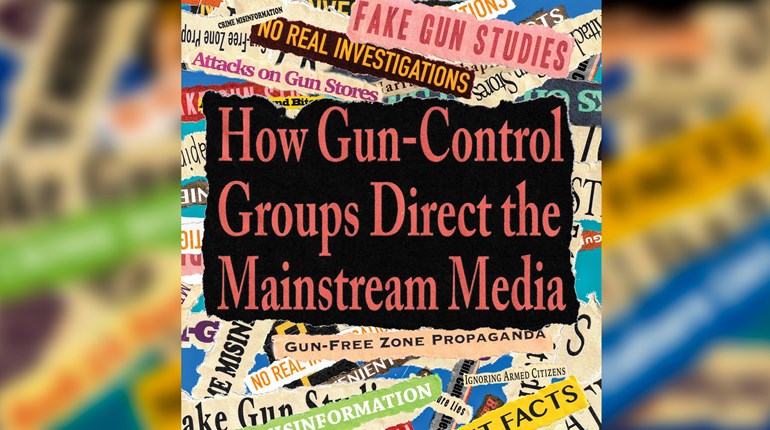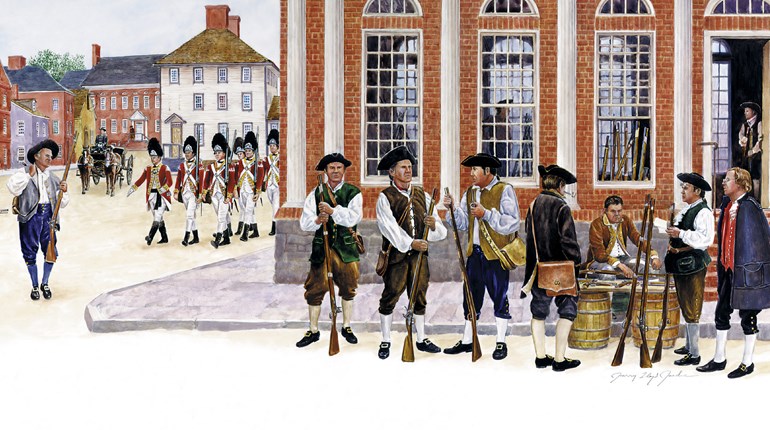
The New York Times has such a long history of inaccuracy and bias, not to mention running with stories to serve its political agenda long before the barest details of those stories are even known, that the Media Research Center has devoted an entire operation—called “Times Watch”—just to keeping up with their baloney.
Last week, true to form, the Times printed a story in which it parroted the anti-gun assertions of a so-called “study” conducted by the Center for American Progress (CAP)—a well-funded leftist group—claiming that states with stricter gun control laws suffer less “gun violence” than states that protect the Second Amendment rights of citizens.
Yet it’s the same old hogwash we’ve heard from the anti-gun lobby for decades.
Indeed, if the Times had bothered to do even the most rudimentary research, they would have found that the CAP study’s rankings of the states make no sense whatsoever.
According to the FBI’s most recent national statistics, in 2015 there were an average of 4.9 murders per 100,000 population, and 372.6 violent crimes committed per 100,000 population.
If you then drill down into the FBI’s annual report on crime and go to Table 5—“Crime in the United State, by State”—you can compare the rates of murder, rape, robbery, assault or overall violent crime among all the states.In other words, in many cases, the study’s findings are the exact opposite of the conclusions you’d reach if you looked at the FBI’s statistics yourself.
Yet the states that the CAP study claims have the “highest” levels of “gun violence” often have lower rates of violent crime than the national average. Likewise, the states that the study claims have the “lowest” rates of “gun violence” often have higher rates of violent crime than the national average.
In other words, in many cases, the study’s findings are the exact opposite of the conclusions you’d reach if you looked at the FBI’s statistics yourself.
For example, in its quintile division of the U.S. into five groups of 10 states each, the CAP study ranks Mississippi, Montana and Wyoming among the “highest” levels of “gun violence” in the U.S. Yet those states’ violent crime rates are, respectively, 26 percent lower, 6 percent lower, and 40 percent lower than the national average. As for murder, Montana’s rate is 28 percent lower and Wyoming’s rate is 44 percent lower than the national overall average.
As we move down the scale, the study groups Kansas, Kentucky and South Dakota into its second-most dangerous group of 10 states in terms of “gun violence,” yet again, the study’s rankings are contradicted by the facts. All three states have lower murder rates than the national average, and Kentucky’s violent crime rate is 41 percent lower than the national average.
Now let’s go to the other end of the supposed rankings.
The study ranks Massachusetts among the “lowest” levels of “gun violence,” yet its violent crime rate is nearly 5 percent above the national average. And it ranks California, Illinois, Maryland and Michigan among the lower levels of “gun violence,” when their rates of violent crime are 14 percent higher, 3 percent higher, 22 percent higher, and 11 percent higher than the national average, respectively.
Using the same “reasoning,” the CAP could have just as easily proven that insulin “causes” diabetes.So what’s happening here?
For one thing, the study considers suicides committed with firearms to be a form of “gun violence.” And since about two-thirds of the annual firearm-related deaths in the U.S. are suicides, this likely skews the results. Tragically, no form of gun control—not even total gun prohibition—seems to have any effect on overall suicide rates, either here in the U.S. or anywhere else. When suicidal people can’t get firearms, they simply substitute other means of ending their lives.
Indeed, as Don Kates and Gary Mauser point out in a study published by the Harvard Journal of Law & Public Policy, a spike in the suicide rate of young men throughout the industrialized world in the 1980s was widely blamed, here in the U.S., on widespread firearm availability. Yet the truth was that the suicide rate among young men in gun-controlled England rose 10 times as sharply as it did in the U.S.—and in England, the most common method of suicide was carbon monoxide poisoning.
Furthermore, there’s the issue of causation: Do less restrictive laws in certain states cause those states to have higher crime rates? Or do the higher-crime rates in those states persuade the people to demand that their Second Amendment right to protect themselves be respected?
In other words, it may not be that “guns cause crime”—but rather that “crime causes guns” in the same way that “fire causes fire extinguishers” and “flies cause fly swatters.” Using the same “reasoning,” the CAP could have just as easily proven that insulin “causes” diabetes—since most diabetics possess insulin, but almost no non-diabetics possess insulin.
Indeed, the Center for American Progress is fairly ham-fisted in its attempts to confuse cause and effect in its study. Above the color-coded map of the U.S. showing which states have lower or higher levels of “gun violence,” the group printed the headline “Gun Violence Outcomes and Ranking by State.” In other words, CAP is trying to say that more “gun violence” is the outcome caused by less gun control. But is “gun violence” the effect of laws that respect the rights of lawful people—or is it the reason why states are restoring the right of lawful people to protect themselves?
A few facts are indisputable:
Over the past 25 years, dozens of states have restored the right to carry, and about a dozen have adopted constitutional carry—the right to carry a concealed firearm without a permit or license.
In the same time frame, Americans have purchased well over 200 million firearms.
During that same period of time, violent crime rates in the U.S. have fallen to the lowest levels in 40 years—and almost the lowest levels ever recorded—according to the FBI.
In other words, as more and more Americans buy and carry firearms, violent crime plummets.
No amount of cherry-picking by anti-gun groups like the Center for American Progress—and no amount of unquestioning repetition of their bogus “findings” by media outlets like The New York Times—can change that.































